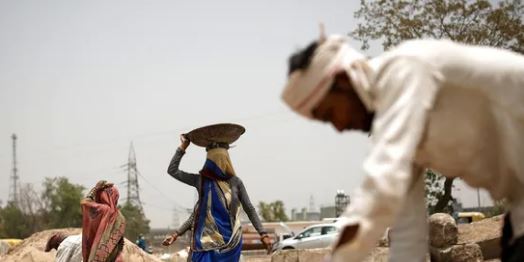The state government announced 100 days of additional work for job seekers under the Mahatma Gandhi National Rural Employment Guarantee Act (MGNREGA) in the four districts under a special livelihood package in January 2020, ensuring 200 days of work at minimum wages. This has now been extended to a total of 300 days per year, with the goal of halting distress migration.
The state cabinet decided on Tuesday that villagers in 20 blocks of four Odisha districts, Balangir, Bargarh, Kalahandi, and Nuspada, which are prone to distress migration, will be given 200 days of work per year in addition to the mandated 100 days under the central rural jobs guarantee scheme.
The state government announced 100 days of additional work for job seekers under the Mahatma Gandhi National Rural Employment Guarantee Act (MGNREGA) in the four districts under a special livelihood package in January 2020, ensuring 200 days of work at minimum wages. This has now been extended to a total of 300 days per year, with the goal of halting distress migration.
The scheme will also ensure that job seekers under MGNREGA in these 20 blocks are paid more than the notified wage rate for unskilled workers, which has been revised upwards to 326 per day in Odisha. MGNREGA charges a daily fee of ₹286.30.
The state will bear the difference between the minimum wage for unskilled workers and the notified wage rate under MGNREGA, according to AKK Meena, the state’s Panchayati Raj secretary. According to Meena, the state budget for the current fiscal year includes wages for 300 days in these blocks. The scheme will go into effect this month.
According to migration experts, Odisha could be the first state to have a state-specific scheme that guarantees 300 days of government guaranteed work in a calendar year. Every year, nearly 3 lakh people migrate from Andhra Pradesh, Chhattisgarh, Gujarat, Tamil Nadu, and Telangana to work in brick kilns or on construction sites.
Despite the fact that Odisha’s GDP growth is higher than that of Haryana, Punjab, Kerala, Chhattisgarh, Madhya Pradesh, Maharashtra, and Jharkhand, seasonal migration is being driven by jobless growth.
Among the various types of migration, distressed migrants continue to be the most impoverished and unrecognised. They are at the bottom of society, disadvantaged by caste, poverty, and structural inequalities. During agricultural droughts, distress migration has been a popular coping strategy in the four districts.
“It’s an excellent scheme that, if properly implemented, has the potential to halt distress migration in those areas.” However, it may not be able to stop aspirational migration,” said Umi Daniel of the non-profit Aide At Action. “The scheme should go beyond just digging soil for ponds and provide workers with a steady source of income.”
“Ideally, departments’ schemes should be converged so that a villager who can build a cattle shed for his livestock under MGNREGA can also get a loan to buy cattle,” he said.

